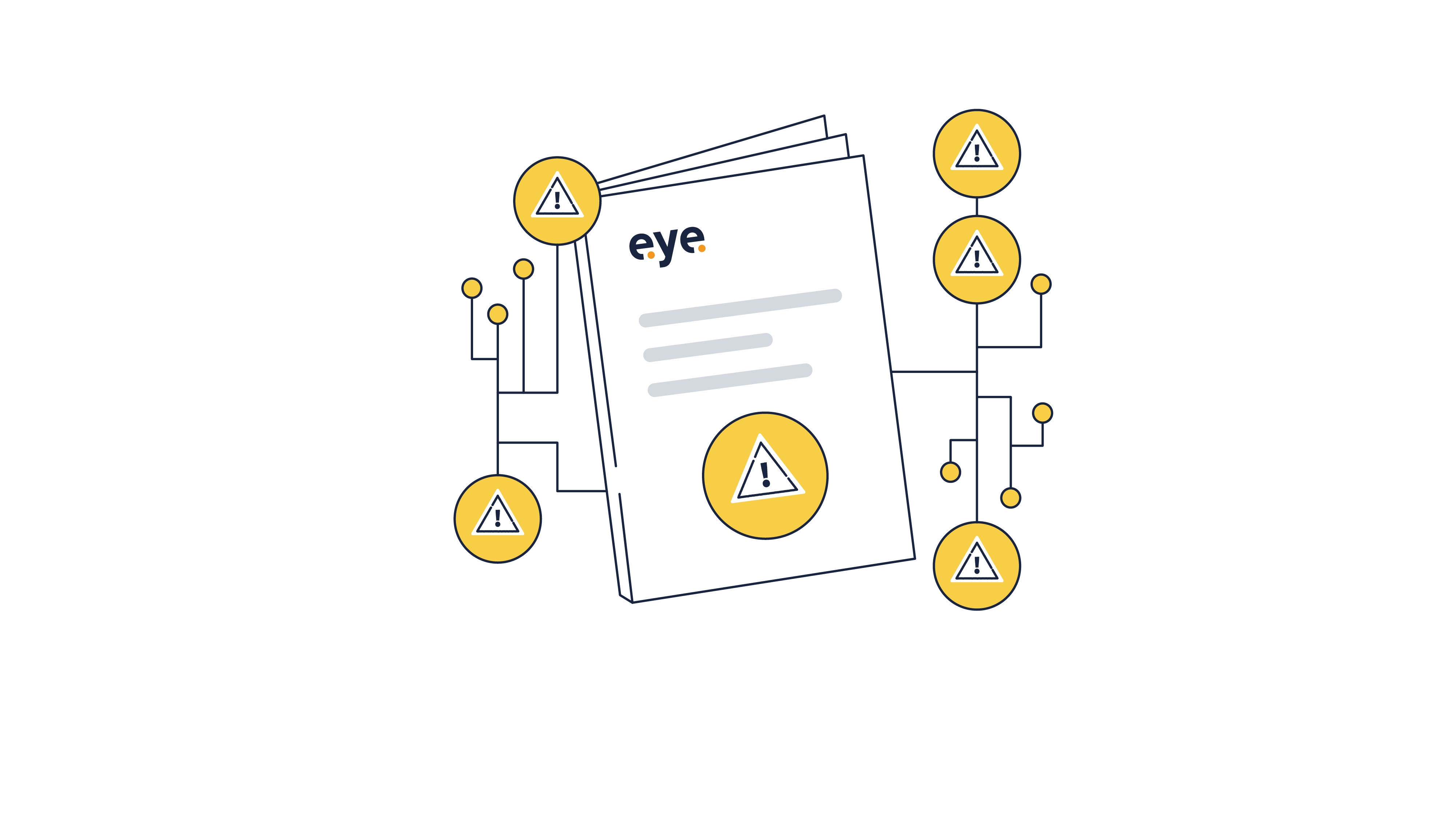Choosing the right cybersecurity tools can be challenging in a crowded landscape. Advanced persistent threats (APTs) represent sophisticated and stealthy adversaries that require proactive measures and threat intelligence integrations to combat. Two common solutions are Endpoint Detection and Response (EDR) and Network Detection and Response (NDR). While both have their uses, EDR is essential for any organisation that is serious about protecting against contemporary threats. With hybrid work, increased reliance on cloud infrastructure, and disappearing network perimeters, EDR is at the core of a strong cybersecurity strategy.
So when should you consider NDR? NDR is marketed as a complementary tool for enhancing network visibility, especially for devices that can't run EDR—like firewalls or legacy OT systems. However, NDR often comes with added complexity, increased maintenance, and higher risks of false positives.
In this article, our Managed Detection & Response (MDR) experts summarise why EDR has a clear advantage over NDR for protecting organisations 24/7 against contemporary cyber threats. We cover specific use cases for effective EDR and NDR setups and argue why NDR should serve as a complementary layer rather than the primary defence mechanism.
Core differences between EDR and NDR
Organisations often struggle with choosing between Endpoint Detection and Response (EDR) and Network Detection and Response (NDR). In a nutshell:
- EDR focuses on individual devices such as desktops, laptops, and servers. It monitors files, processes, users and network activities at the endpoint level and detects threats where they often begin and pivot—on the endpoint itself. EDR solutions are designed to handle dynamic security incidents, providing the necessary investigation and remediation capabilities to address rapidly evolving threats. Unlike traditional antivirus solutions that rely on known malware signatures, EDR offers advanced detection and response capabilities.
- NDR, on the other hand, focuses on the flow of information across the network, detecting anomalies or potential threats within network traffic. NDR primarily monitors east-west (internal) or north-south (external) network activity.
The cybersecurity landscape has evolved dramatically, with hybrid work environments, cloud-based infrastructures, and bring-your-own-device (BYOD) policies effectively eliminating the concept of a secure network perimeter.
Deployment steps and visibility
Visibility is everything in cybersecurity. Without clear visibility into potential threats, it is extremely difficult to take protective action. EDR delivers deep visibility into host behaviour in Windows, Linux and MacOS systems. This includes (virtual) servers and laptops independent of their location. NDR delivers broad visibility into network behaviour with a central appliance, which brings some trade-offs.
| EDR | NDR | |
| Deployment methodology | Agent software deployment profile configured in common MDM solutions like Intune, AD Group Policy or others. | Virtual or hardware appliance, central location in the network, passive SPAN port or in-line (less common). |
| Phased deployment | Agents are commonly deployed in learning/passive mode, creating a behaviour baseline while processes are not stopped/killed (and thus the business is less impacted). | The NDR implementation plan needs to be drafted based on the local network architecture. Multiple IT stakeholders need to adjust firewalls and embed hardware maintenance processes in the team. |
| Time to value (TTV) | Once the agent installation profile is deployed, all managed endpoints will be onboarded within minutes or hours. | An NDR implementation usually takes several weeks or months to complete. |
| Visibility (telemetry) | EDR monitors and collects processes, running applications, file changes, user activities, cloud connections, neighbouring devices and even network connections to and from the device. Best-of-breed EDR solutions combine telemetry of all agents into one central IT asset overview. | Depending on the network architecture, the NDR monitors and collects network metadata like source IP address, destination IP address and corresponding port numbers. With sNAT, the source IP address is not available. Any relevant data fields are often encrypted with TLS when SSL offloading is not implemented. |
| Caveats to proper deployments | EDR coverage is key to adequate visibility to minimise unmonitored endpoints (Shadow IT). Asset discovery telemetry, available in most best-of-breed EDR solutions, must be used to manage EDR coverage to near 100%. Don't forget to enable the EDR uninstall protection. | Enforce always-on VPN in hybrid environments, otherwise, remote workers will not be seen. Consider decrypting traffic with SSL offloading, otherwise, detections will mostly be non-actionable without context. Avoid creating (insecure) routes between segmented networks to NDR as this potentially eliminates the value of this segmentation. |
Detecting modern cyber threats
The annually updated ENISA Threat Landscape (ETL) highlights that ransomware, phishing, and supply chain attacks are among the most significant challenges facing organisations today. Detecting these threats requires a careful balance between maximising detection capabilities and minimising false positives to avoid alert fatigue. EDR and NDR offer a different value in detecting these modern threats.
| EDR | NDR | |
| Lateral movement | Tracks unusual internal connections, privilege escalations, and process anomalies on endpoints. Can detect attackers trying to move between devices or escalate privileges. | Depending on network architecture, monitors traffic between internal hosts for unusual connections or data flows. Detections are difficult to triage because of lack of endpoint context. |
| Ransomware | Detects mass file encryption through file system monitoring and behavioural analysis. Isolates compromised endpoints and kills malicious processes. | Monitors unusual outbound traffic to C2 servers, but struggles to limit false positives because of TLS and because the lifetime of the C2 infra is very short (minutes to days). |
| Phishing (attempts) | Monitors email clients and browsers to catch malicious attachments or URLs. Detects credential theft attempts and blocks malicious software installations. | Identifies unusual network traffic or DNS requests to phishing domains. Limited in preventing initial compromise and HTTPS enforcements by browsers. |
| Supply-chain attacks | Monitors compromised applications for unusual behaviours and uses IOCs to detect trusted software acting maliciously. | Detects unexpected communications from compromised software. Struggles to distinguish legitimate traffic from malicious traffic without endpoint context. |
| Exploitation (attempts) | Detects exploitation attempts using behavioural analysis and threat intelligence. Provides real-time alerts and can isolate the endpoint. | Monitors network anomalies indicating exploitation but struggles with attacks occurring purely at the host level. |
| Data (crown jewel) | Endpoints often contain/manage the crown jewels (like data) that attackers seek. Even if an earlier detection opportunity is missed, EDR ensures that there are multiple opportunities along the attack path to identify and halt an attacker before significant damage occurs. | Monitors for suspicious data transfers and network communications potentially targeting sensitive assets. However, NDR lacks visibility into specific actions occurring at the endpoints, which could easily be mistaken for benign IT admin activity like backups. Once data exfiltration to external IP addresses is detected, it is often already too late. |
Response capabilities to mitigate active threats
Detection is only part of the equation within EDR and NDR. The ability to respond effectively is what makes a solution truly powerful. EDR security solutions are designed to monitor endpoints continuously for potential threats, performing automatic mitigation actions to enhance incident response efficiency:
- EDR offers advanced response capabilities that go beyond just notifying security teams. It provides direct interventions, including isolating an endpoint, terminating malicious processes, and rolling back changes made by malware. This allows organisations to contain and neutralise threats before they escalate into breaches.
- In contrast, NDR’s response options are limited. Typically, NDR can only send TCP reset packets to disrupt suspicious connections, which doesn’t remove the underlying threat. The result is often a delay in remediation, as the true cause of the threat remains active. Additionally, pinpointing which device is the source of malicious network activity can be challenging without the detailed visibility that EDR provides, especially in complex or poorly documented network environments.
In practical security workflows, analysts often pivot from NDR to EDR when they need to understand the depth and context of an alert. NDR might flag suspicious traffic. But without endpoint-level insight, it is difficult to determine the full story—such as which process initiated the behaviour or whether malicious changes have occurred. EDR fills this gap by offering the depth needed for effective, informed responses.
Addressing common misconceptions
A common misconception is that NDR, being out-of-band, is tamper-resistant, making it a safer option for network security. Attackers might find it harder to disable NDR since it operates separately from endpoints. But this doesn’t make it invincible. Attackers can bypass NDR by using encrypted communications or trusted platforms like GitHub to spread malware—effectively rendering NDR unable to monitor their activities.
EDR's tamper protection on the kernel level, on the other hand, ensures that it remains functional even if an attacker gains administrative privileges on a compromised device. If someone tries to tamper with the agent, a critical alert is triggered. It is true that there exists EDR killer software. But to utilise this as an attacker, you often need to have administrative privileges on an endpoint, allowing for multiple detection opportunities for EDR along the attacker path to admin.
Another argument in favour of NDR is its value in monitoring environments where endpoint agents cannot be deployed, such as OT, IoT, and legacy systems. However, these systems typically represent a small portion of the overall infrastructure and often have limited network exposure. The more effective strategy is to isolate these legacy systems and protect the IT infrastructure surrounding them with EDR, ensuring that attackers cannot pivot to more critical systems.
Furthermore, while NDR might offer visibility into network-based attacks, most attacks today are endpoint-based, often leveraging remote access methods to breach systems via the internet. In our incident response experience, attacks such as ransomware have always involved remote compromise, with endpoints being the point of entry. EDR is ideally suited for these scenarios, providing comprehensive detection and response capabilities.
Conclusion: EDR as core, NDR as supplement
After evaluating the capabilities and limitations of both EDR and NDR, it becomes evident why EDR is the cornerstone of any effective cybersecurity strategy. EDR provides real-time visibility, advanced response capabilities, and the context necessary for threat detection and mitigation—all of which are essential for today’s rapidly evolving threat landscape.
While NDR can play a supporting role—offering additional anomaly detection for unmanaged devices or lateral movement within specific network architectures—it should not be considered the primary solution. NDR is most effective when it complements EDR, helping to cover blind spots that arise in complex environments. However, it falls short in detection, response, and overall operational effectiveness when compared to the endpoint-centric focus of EDR.
To achieve the best results, organisations should focus on implementing a best-of-breed, managed EDR solution, ensuring it is properly configured with effective tamper protections and incident response playbooks. NDR should be seen as an optional layer, deployed only when specific visibility requirements exist that EDR alone cannot fulfil.
At Eye Security, we advocate for a no-nonsense approach to cybersecurity—one that emphasises the fundamentals, prioritises endpoint defence, and uses network monitoring selectively to fill in the gaps. By doing so, we help build a resilient security posture that stays ahead of attackers and adapts to emerging threats.
Worried about protecting your network against ransomware? Wondering how Eye Security can help? Book a meeting now:



